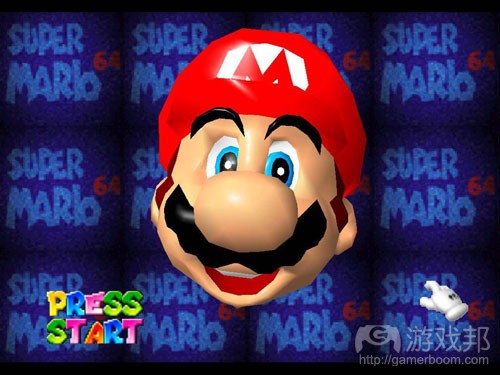解析电子游戏中的现实性vs.趣味性
作者:Dylan Woodbury
游戏产业中出现了许多变化,而最大的变化要数现实性与乐趣的平衡。游戏中的现实性不一定是现实世界的现实性。例如现实世界中便不存在僵尸,但是我们却能够在《生化危机》中频繁地看到这一生物。而乐趣则是牺牲现实性去给予玩家更有趣的体验。例如3D版本的《超级马里奥》(如《超级马里奥64》,《阳光马里奥》和《超级马里奥银河》)便具有少量的现实性,但是玩家却经常因为游戏的不真实而很难真正接受马里奥世界。
图像便是影响现实性与非现实性平衡的主要因素。《神秘海域2》拥有许多逼真的图像,所以这些现实性能让玩家深深沉浸于其中。而《塞尔达传说:风之杖》则呈现出比现实更有趣的卡通图像。所以到底怎样的设置更加吸引人?答案取决于玩家及其习惯的游戏风格,但却有许多玩家同时喜欢两种完全不同类型的游戏,如《战争机器》和《块魂》。
谜题便能用于定义游戏的现实性。像《半条命》中便设有许多真实的谜题和问题。就像在游戏中的某一时刻,玩家必须想办法维系其两个分离电线间的电流。而在电线间放置锡罐便能够创造一个环路。这便是现实世界中一种非常有效的解决方法——如果游戏世界中的资源非常局限的话。而在《乐高星球大战》中,如果两个玩家同时踩在门附近的开关上,门便能够打开。这便是一种不现实的设置,因为如此敌人的基地便不存在安全特性,不过这样的谜题设置却非常有趣——虽然不存在现实性!
实际上,大多数人将现实性vs.非现实性作为在行动冒险类中衡量一款游戏是“硬核游戏”还是“休闲游戏”的决定性因素(游戏邦注:尽管也存在许多对立的游戏)。遗憾的是,这两个领域日趋极端化(变成是超级现实性或者极端虚构),而中间点变得越来越小了。但是在某些情况看来这种变化是有意义的。Tom Clancy即将推出的《细胞分裂5:断罪》便侧重于表现现实性。像现实的图像,现实的游戏玩法,现实的环境以及各种现实的主题等等。而“踩在巨大的红色按钮上能够打开门”的谜题便不可能出现在这款游戏中。但是如果在即将发行的《超级马里奥银河2》中,开发者在洗手间放置了一块肥皂,并让玩家能够将其变成钥匙去开门,这将完全影响游戏的发展,让玩家感到极端困惑。呈现出现实性,如打开一把锁,去平衡非现实性,如向上跳去撞击蘑菇并获得蘑菇吐出来的金币,并不能完善游戏。
现实性与非现实性间的战斗所带来的消极影响还体现在游戏中的概括。当我们看到一款带有卡通图像的游戏时,我们将会自动把它归为“休闲游戏”。虽然也存在例外,但是大多数情况下都是如此。而作为设计师的我们需要明确原因。带有程式化图像的游戏能够拥有《侠盗猎车手4》般的现实性,而带有现实图像的游戏也能够拥有《塞尔达传说:黄昏公主》般的乐趣。
《塞尔达传说》系列游戏便有效地结合了现实性与非现实性,所有游戏设计师(不管是现在还是立志成为游戏设计师的人)都应该学习这些游戏的设计。它们始终站在游戏变革的前沿。《时之笛》便拥有那一时代最优秀的图像(当时仅有的3D游戏之一),包含了能够解决谜题的现实性,同时也具有非现实性。玩家可以使用弓箭去射击墙上的光,而打开房间另一边的门(非现实谜题)。同时,玩家还可以从悬崖上跳到一个巨大的蜘蛛网上摧毁它,从而打开一扇新的探索之门(现实谜题)。
尽管具有风险性,并很有可能遭遇失败,但是我认为如果能够基于合适的背景,世界和环境,我们便有可能创造出平衡现实性与乐趣的游戏,这也是整个产业长久以来所期盼的结果。
(本文为游戏邦/gamerboom.com编译,拒绝任何不保留版权的转载,如需转载请联系:游戏邦)
Realism vs. Fun
by Dylan Woodbury
There are many changes coming about in the game industry, and the biggest one has to do with the balance of Realism vs. Fun. Realism in games does not necessarily mean realism in the real world. For example, zombies are not a common occurrence in our world (at least where I live), but are seen quite often in the Resident Evil universe. Fun is the sacrifice of realism made to give the player a more fun experience. The 3D Super Mario games (64, Sunshine, Galaxy), for example, have rather small trickles of realism, but the game overall is too unreal for players to accept as real for even the Mario universe.
A major factor in the balance between the Yin and Yang (Realism and Unrealism) are the graphics. Uncharted 2 has amazing graphics, and their realism really immerses the player. Legend of Zelda: Wind Waker has cartoony graphics that seem more fun than serious and real. So which is more fun? It may depend on the gamer and what he/she is used to playing, but many gamers both play and enjoy games like Gears of War and Katamari.
A characteristic that many times defines a game’s realism are the puzzles. The Half Life games have many very real puzzles and problems. At one point in a game, you must find a way to continue the flow of electricity between two seperated wires. Putting a near-by tin can between the wires completes the circuit. This is a very good solution in the real world, if under the same circumstances with limited resources. In Lego Star Wars, if both players step on the two switches near a door, it will open. This setup is VERY unreal, as it would probably be an inconvenient security feature for an enemy base, but puzzles like this are fun, even without realism!
In fact, most people see Realism vs. Unrealism as the deciding factor as to whether a game is “hardcore” or “casual” (although there are many games that are the opposite) amongst action-adventures. The sad thing is that these two fields are becoming more and more extreme (super-realistic or extremely fake), with fewer and fewer in-betweens. This makes sense in some cases, though. The upcoming Tom Clancy’s Splinter Cell: Conviction focuses on realism. Real graphics, real gameplay, real surroundings, and more and more real all promote the theme of… well, real! A “step on the large red button on the ground to unlock the door” puzzle is not going to flow with the rest of the game. If in the upcoming Super Mario Galaxy 2 game you had to find a bar of soap in a restroom, and mold it into a key to unlock the door, the entire flow of the game would be ruined, and the player would be confused. Throwing in realism, like picking a lock, to balance out the unrealism, like jumping on mushrooms to kill them, who then shoot out a coin, does not improve the game.
Another sad effect of the battle between realism and unrealism are the huge generalizations made in games. If you see a game with cartoony graphics, you will automatically think “casual”. There are some exceptions to this, but it’s pretty much always correct! We as designers need to ask ourselves why this is. A game with stylized graphics can have all of the realism as Grand Theft Auto 4, and a game with real graphics can have the fun of Legend of Zelda: Twilight Princess.
A great example of a mix between realism and unrealism is The Legend of Zelda series, which every game designer (current or aspiring) should play and learn a lot from about game design. It has always been on the front of evolutionizing games. The Ocarina of Time had near the best graphics for its time (it was one of the only 3D games), included realism to solve puzzles, but also unrealism. For instance, shooting a glowing light on the wall with your bow and arrow might for some reason open the door on the other side of the room (an example of an unrealistic puzzle). At the same time, jumping off of a cliff onto a huge spiderweb might break it, opening a new floor to explore (an example of a realistic puzzle).
I believe, although it would be EXTREMELY risky and most likely be a failure, if done correctly under the right setting, world, and circumstances, a game that balances realism and fun could be the sensation that the industry has been waiting for for a long time. (source:gamasutra)








































 闽公网安备35020302001549号
闽公网安备35020302001549号